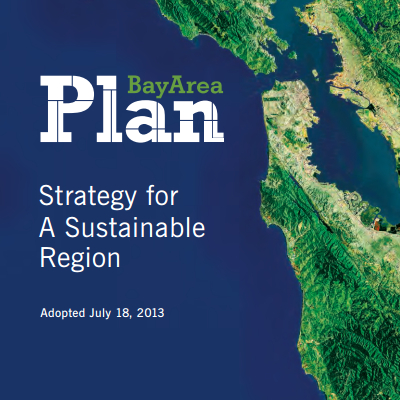Unless the elites change their ways, centralized planning is never going to work

MAY 13 — There’s a push on by Bay Area elites to centralize the region’s governance.
When the SF Business Times recently asked Emmett Carson, the CEO of the Silicon Valley Community Foundation, the nation’s largest foundation of its kind ($6.5 billion assets), what organizational goal he has yet to achieve, Carson replied:
Creating a regional conversation from south of Market Street in San Francisco to Market Street in San Jose that results in action to address our community’s growing income inequality, affordable housing crisis, transportation gridlock and the dismal reading scores of our third graders.
That reply echoes the call that’s being issued almost weekly by the editors of the Biz Times themselves. Their counterparts at the San Francisco Chronicle follow suit, regularly citing Bay Area Council President and CEO Jim Wunderman and SPUR Executive Director Gabriel Metcalf on the need to address the region’s most urgent issues by consolidating the region’s fragmented public agencies into an overarching authority.
As 48 hills reported, such consolidation is a major theme of the HUD-funded Economic Prosperity Strategy that was posted last October on SPUR’s website.
In theory, a stronger regional government could be a good thing. It could correct or at least mitigate the gross imbalances between housing and jobs in San Francisco and the Peninsula tech cities; tie together the Bay Area’s myriad transit systems into a single, efficiently run and reasonably priced network; protect and provide housing that’s truly affordable to the poor and the middle class; improve working conditions in the region—above all, by making it easier to unionize; and deal forthrightly with the chastening effects of drought and sea level rise on consumption and construction. And it could do all that while cultivating an informed and engaged citizenry.
But for such a prospect to become reality, the Association of Bay Area Governments and the Metropolitan Transportation Commission would have to fundamentally change the way they do business. They’d have to abandon their insular, peremptory style of decisionmaking and start to proceed in a manner that’s accountable to the people they purport to represent—the Bay Area’s residents. Instead of blowing off challenges to their blinkered vision of endless growth and their stealth attacks on the California Environmental Quality Act and the local control of zoning, they’d have to sponsor a vigorous debate on these policies that culminated in a popular vote in every jurisdiction.
Dream on. At ABAG and MTC, it’s business as usual, and then some. That’s clear from the way the regional agencies are undertaking the update of the controversial Plan Bay Area.
SB 375, Plan Bay Area, and the festering controversy over big growth, big bucks, and local control
Plan Bay Area is mandated by SB 375, which was signed into law by then-Governor Schwarzenegger in October 2008. The legislation requires the state’s eighteen metropolitan planning organizations—in our case, that’s ABAG and MTC—to prepare a “Sustainable Communities Strategy” that knits together land use and transportation planning with the aim of reducing greenhouse gas emissions while providing housing that accommodates projected population growth at all income levels.
In pursuit of these goals, SB 375 streamlined, i.e., weakened the California Environmental Quality Act by exempting certain dense, transit-oriented projects from partial or full CEQA review — which is to say, from an Environmental Impact Report — even if they conflict with local plans. It also requires regional transportation funding decisions—in the Bay Area, that means the many millions of dollars controlled by MTC—to be consistent with the Sustainable Communities Strategy.
At the same time, the law states:
Nothing in a sustainable communities strategy shall be interpreted as superseding the exercise of land use authority of cities and counties within the region.
The potential for controversy here is enormous.
That potential is already well on its way to being realized by fights over our nine-county region’s first Sustainable Communities Strategy, Plan Bay Area. PBA also includes the Bay Area’s 2040 Regional Transportation Plan.
What drives everything else in Plan Bay Area are the demographic “forecasts” (we’re not supposed to call them predictions):
Projected demographic changes between 2010 and 2040
- Population: 9.3 million residents, an increase of 2.1 million or 30% (This is the source of the much-repeated claim that by 2040 San Francisco will have a million residents).
- Employment: 1.1 million more jobs, a 33% increase
- Housing: 660,000 more housing units, a 24% increase
In keeping with SB 375’s anti-sprawl, smart growth priorities, Plan Bay Area directs 80% of the projected new housing units into Priority Development Areas, diverse neighborhoods of at least 100 acres that are near at least one public transit route that has minimum 20-minute headways, and that have been chosen for dense, “infill” housing construction by city councils or county boards of supervisors.
Along the same densifying lines, the plan envisions 40% of job growth happening in just three cities: San Jose, San Francisco, and Oakland, and two-thirds of the 1.1 million new jobs to be in PDAs throughout the region.
The opening pages of Plan Bay Area profess support for local control of land use:
Preserving Local Land Use Control
Adoption of Plan Bay Area does not mandate any changes to local zoning, general plans or project review. The region’s cities, towns and counties maintian control of all decisions to adopt plans and permit or deny development projects. (3)
And then, this cagey note:
The plan assists jurisdictions seeking to implement the plan at the local level by providing funding for PDA planning and transportation projects. Plan Bay Area also provides jurisdictions with the option of increasing the efficiency of the development process for projects consistent with the plan and other criteria included in SB 375. (3)
Translation: get with the PDA program, or forget about applying for any of the $800 million that MTC and ABAG will be doling out through the OneBayArea Grant Program between Fiscal Years 2012-13 and 2015-16.
As for “increasing efficiency of the development process:” Plan Bay Area implements SB 375’s rollback of CEQA and with “the need”—“highlighted” by “business groups” in the region—to “remove regulatory barriers to infill development.” (3)
The plan was approved by ABAG and MTC in July 2013 after a contentious, sometimes rowdy public process that brought out opponents from across the political spectrum. Advocates for equitable housing and transportation, slow growth activists, big real estate interests, and the Tea Party and its fellow travelers all assailed the draft document. The plan’s whopping demographic projections were contested by community activists and professional economic forecasters, to no avail.
After the plan’s approval, the regional agencies faced four CEQA lawsuits:
| Plaintiff | Basic argument |
| Earthjustice, Communities for a Better Environment, the Sierra Club | PBA does too little reduce GHG emissions, spends too much on new roads, and will displace low-income residents and communities of color living near major transportation hubs |
| Building Industry Association of the Bay Area | PBA’s “PDA-centric nature” violates SB 375, because it does not provide enough housing to accommodate the region’s projected population growth |
| Bay Area Citizens/Pacific Legal Foundation | PBA failed to consider reasonable alternatives to high-density housing and transit-oriented development, which the public does not want |
| The Post Sustainability Institute, Rosa Koire, and Michael Shaw | PBA’s focus on high-density development violates the Fourth and Fifth Amendments by depriving private property owners of the right to use their property as they choose (also claimed that PBA amounts to a taking); the plan is part of a UN scheme |
The environmentalist coalition and the Building Industry Association settled out of court. The two right-wing plaintiffs—the Pacific Legal Foundation gets funding from the Koch Brothers—lost their cases.
The litigation is history, but the underlying disagreements over growth, local control, equity, and democratic process are again coming to the fore, as ABAG and MTC begin to comply with SB 375’s stipulation that each Sustainable Communities Strategy be updated every four years. That means a revised Plan Bay Area must be approved by 2017.
One process for the public, the other for the building industry and its official enablers
Launched last fall, the Plan Bay Area update is proceeding along two very different tracks.
There’s the public participation process. SB 375 requires metropolitan planning organizations to adopt “a public participation plan for development of the sustainable communities strategy” that includes at least one “workshop” in each county of a region with a population greater than 500,000, and as at least three public hearings on the draft sustainable communities strategy. The workshops are to “provide the public with the information and tools necessary to provide [sic] a clear understanding of the issues and policy choices.”
Given Plan Bay Area’s scope and complexity, these requirements are risible. A metropolitan planning agency that was serious about public participation would do far more than what the law requires. And ABAG and MTC are doing more, but what they’re doing is problematic.
The agencies are just completing the first of three rounds of real and virtual “public open houses”—one in each county—where Bay Area residents can presumably learn about the Plan Bay Area update. The virtual event is an insult to the public’s intelligence. The live alternative is not much better. Staff stand by poster boards advertising the virtues of sustainable development à la Plan Bay Area and do their best to squelch dissent and discussion of the big, controversial issues.
There’s also the ongoing deliberation at umpteen ABAG and MTC meetings in the agencies’ headquarters across the street from the Lake Merritt BART station. Here the big, controversial issues are being broached, but so far, only by pro-growth, anti-CEQA state and regional officials and their developer chums who rail against grassroots activism and the local control of land use.
This is where regional policy is being made.
It’s a scene that’s rarely frequented by anyone who hasn’t been paid to show up. That’s partly because almost all of these meetings are held on a workday morning. It’s also because the general public doesn’t know about them, thanks to the media’s customary disregard of regional land use and transportation politics, except when there’s a scandal or an uproar (see: ABAG staffer embezzles a million dollars, MTC buys an expensive building in San Francisco for its new headquarters, Tea Party disrupts Plan Bay Area workshops).
Occasionally you encounter a passing reference to a costly project that’s already been funded by the regional agencies.
On May 11, for example, the story on the front page of the Chronicle described Ed Lee’s scheme to tear down part of Highway 280, move the Caltrain station to “just a block or two” from the proposed Warrior’s arena, and put the train tracks underground—a scenario at odds with existing plans “to extend Caltrain and envisioned high-speed rail service from the Fourth and King station to the new Transbay Center at First and Mission.” The mayor’s alternative, wrote Matier and Ross, was “unveiled last week at a closed-door meeting with representatives of Caltrans, Caltrain, the Metropolitan Transportation Commission and other transportation agencies.” Since “Lee first floated the idea two years ago….the city has been awarded $1.7 million in grants from the Metropolitan Transportation Commission and others to study the idea.”
I’ll risk a little speculation and venture that, unlike the completed study, neither the city’s application for nor its reception of MTC grant got any coverage in the press, and that the same goes for the $38 million that MTC awarded San Francisco in Fiscal Years 2013/14 to 2015/16 (the city got with the program).
In a modest effort to redress this neglect, 48 hills will follow and assess both tracks of the Plan Bay Area 2017 update.
For starters: Tonight (Wednesday) evening, MTC and ABAG will hold the first San Francisco County open house on the PBA update at Hotel Whitcomb, 1231 Market at 8th Street, right across from Civic Center BART. You’ve been forewarned.




